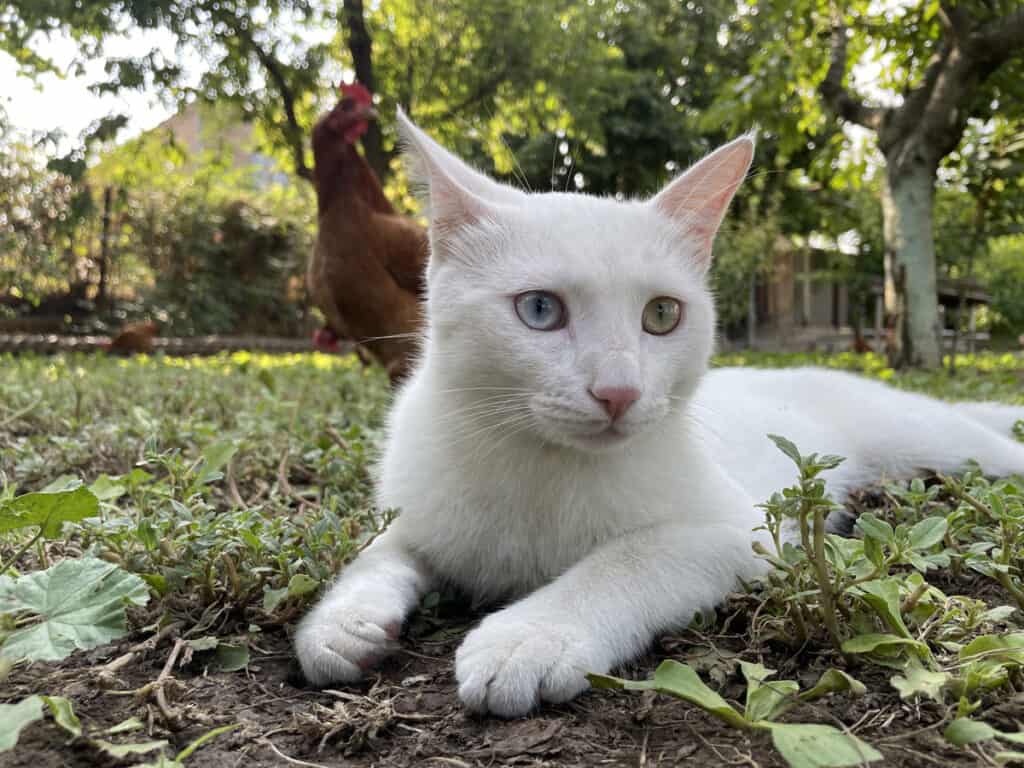Some cat fur coat colors are easy to understand. White cat, black cat — these are easy coat colors to visualize.
Other cats have much more intriguing coat color descriptions. Buff, dilute, blue, and lavender are some of the more interesting coat color names.
Learn about the vast variety of cat coat colors and the genetics behind cat coat colors.
Basics of Feline Coat Colors
The primary determinant of a cat’s coat color is its genetic makeup. Genes control the production and distribution of pigments in a cat’s hair, resulting in a wide range of coat colors.
Two main pigments, eumelanin (black pigment) and pheomelanin (red pigment), are responsible for most of the color variations seen in cats.
Types of cat fur patterns
Cats can be one solid color, a combination of two colors (bicolor), have a tapestry of colors like tortoiseshell and calico cats, or have bold markings tabby cats.
Solid coat colors
Solid coat colors are characterized by a uniform coloration throughout the cat’s body. This means there are no markings and each strand of fur is one color with no variation.
Solid colored cats include popular shades such as black, white, blue, cream, and red.
Solid colored cats are also known as self colored.

Black is a classic and dominant color, while white is the result of a lack of pigmentation. Blue cats possess a dilution of black pigment, creating a bluish-gray appearance. Cream cats have a light orange hue, while red cats are a rich and vibrant shade of orange.
Bicolor coats
Bicolor cats are a combination of two colors. Black and white is a common bicolor coat combination.
The amount of white on these cats is known as white spotting and can range from barely any white to mostly white with small clumps of black fur.

Tortoiseshell
Tortoiseshell cats are another type of bicolor cat. Tortoiseshells consist of a mixture of black and orange patches and have very little to no white spotting.
Colorpoint coats
Colorpoint patterns are characterized by a light-colored body and darker-colored extremities such as the face, ears, paws, and tail.
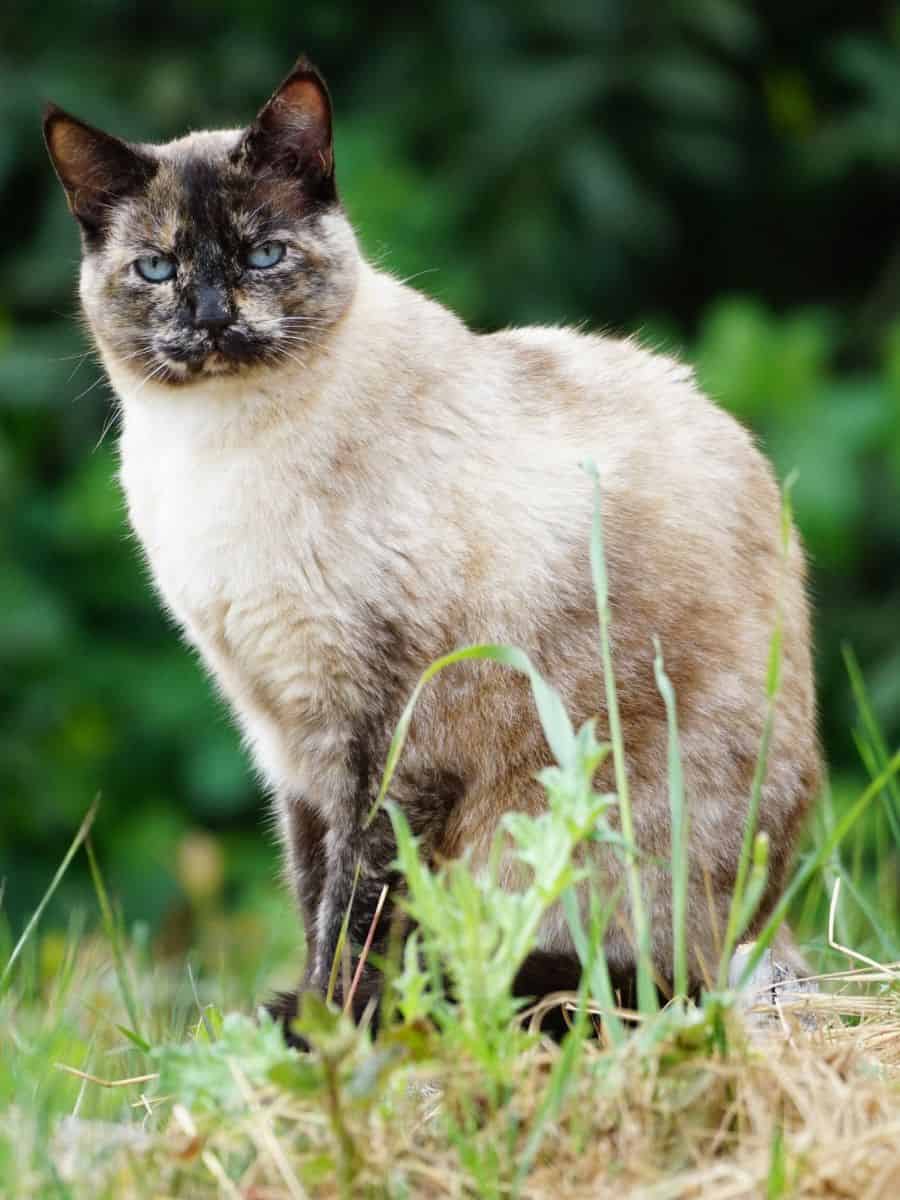
Siamese cats are the most iconic example of this coat coloration, with their pale bodies and deep blue points. Other pointed breeds include the Birman, Ragdoll, and Himalayan cats, each exhibiting variations in their point colors.
Tabby coat patterns
Tabby patterns are one of the most common and striking coat variations in domestic cats. These patterns feature bold markings such as stripes, swirls, and spots.
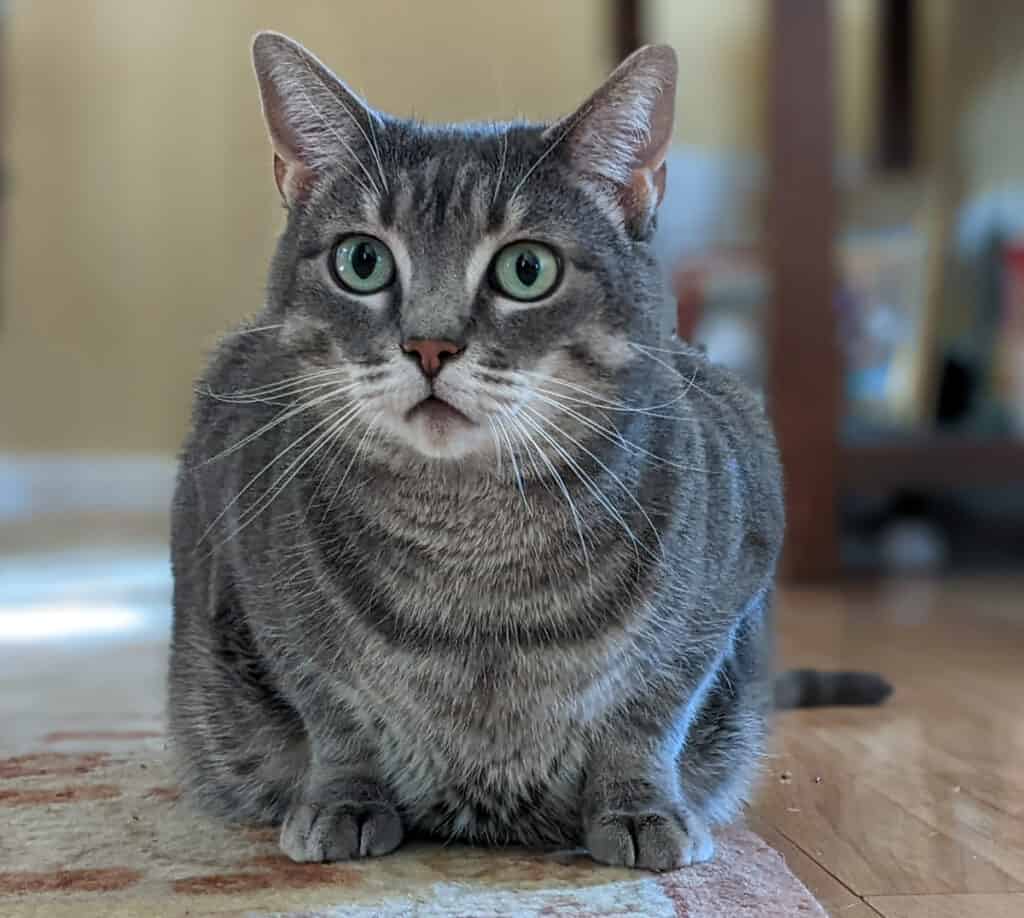
Tabby cats can have various base colors, including brown, silver, blue, and red.
Calico coat colors
The calico cat pattern is a tricolor coat that features patches of black, orange, and white.
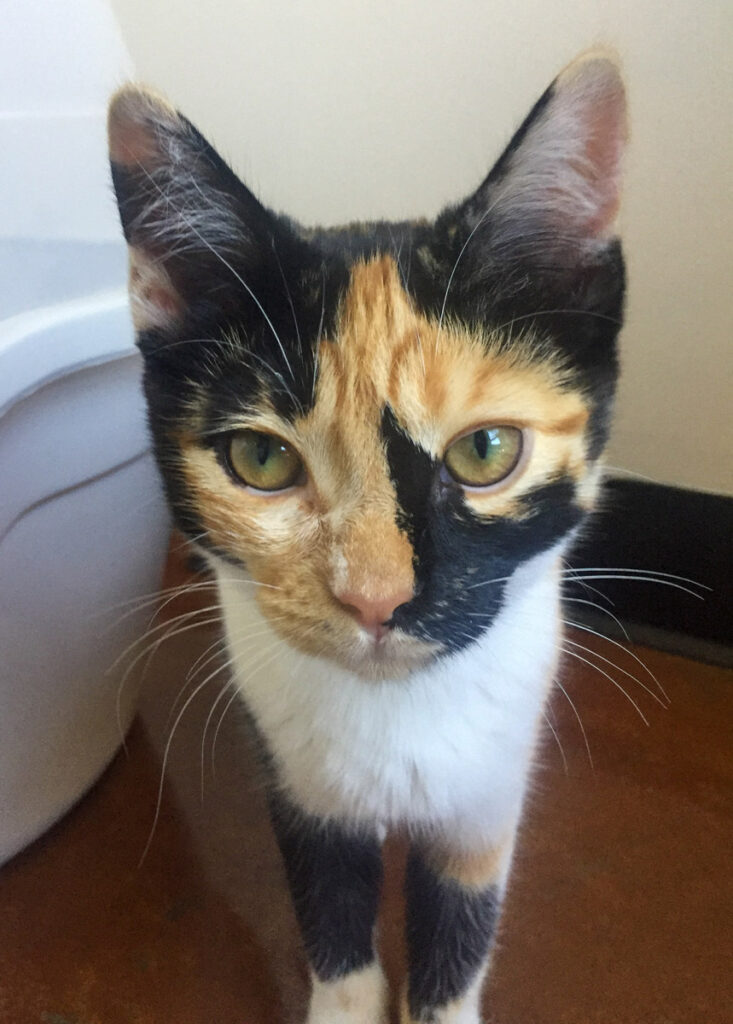
These coat colors are linked to the X chromosome, and almost exclusively found in female cats due to their genetic makeup. Male cats that are calico or tortoiseshell are the result of a genetic mutation and are known as unicorn cats.
Solid cat coat colors
The color of a cat’s fur is determined by its genetics.
Two pigments, eumelanin and pheomelanin, are primarily responsible for fur color in cats. Eumelanin produces blac, brown, and cinnamon colors, while pheomelanin produces red and yellow colors.
The base colors for a cat are either shades of black or red. The genetic sub-variations of cinnamon and brown are considered base colors by some cat fanciers although these two colors are recessive variants of black that are the result of reduced eumelanin production. Every variation of cat color and shade is derived from these base colors.
White fur is the absence of pigmentation in the cat’s fur.
What are dilute colors in cats?
The density of color is influenced by the presence of the dense pigment (D) gene. The “D” allele results in a dense or deep color, whereas the “d” allele results in a diluted or lighter color.
The shades of blue, lilac, fawn, and cream in cat coats are recognized as dilute colors. These occur when pigment distribution along the hair shafts is uneven, leading to a lighter, cooler shade that can often bestow a somewhat dusty or hazy quality to the coat.
Learn about the range of cat fur coat colors, from lightest to darkest.
What is the dilute modifier gene in cat?
The dilute modifier gene, symbolized as “Dm”, is a gene in cats that alters or modifies the color of a diluted coat.
Normally, when a cat has two copies of the dilution gene “d”, black fur is diluted to blue (a soft gray), and red or orange fur is diluted to cream. However, when the dilute modifier gene is present, it changes these diluted colors even further.
Blue coats become caramel (a warm, light brown), and cream coats become apricot (a warm cream color).
Black
Eumelan is the pigment responsible for black base coats in cats.
The order of dominance for the allele for the expression of shades of black as a coat color is is B > b > bl. B is the allele for black coats, b is the recessive gene for brown, and bl is the recessive gene for cinnamon.
Both brown and cinnamon cats have reduced eumelanin production which produces the shades of brown.
Black cats
Black, also referred to sometimes as ebony, is the darkest pigmentation for cats with an all-black base coat. Black cats have the “B” allele which is dominant.
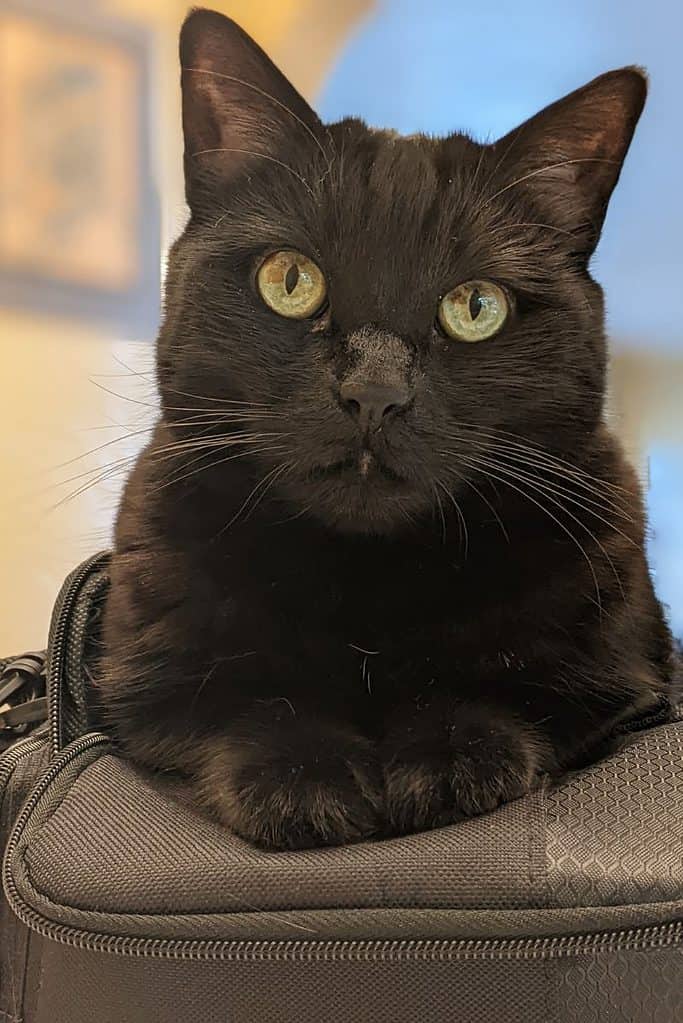
There are 22 recognized cat breeds with black cats.
Of those, only the Bombay cat is exclusively black. The cat breed was developed in Kentucky by Nikki Horner who was inspired by the Indian panther according to the Cat Fancier’s Association.
Blue cats
Despite the name, blue cats aren’t blue. Bluish-gray is the diluted expression of the black gene.
The dilute gene (“d”) is recessive so both male and female parents have to carry this gene for offspring to carry the “d/d” genotype.
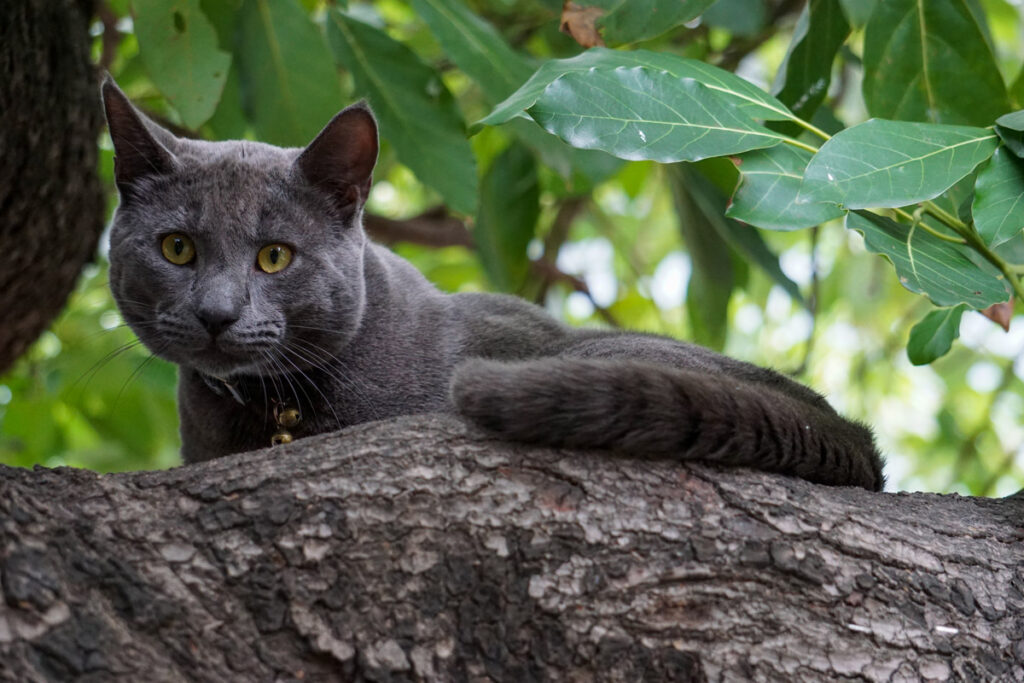
Blue cats, like the Russian Blue range from a dark grey slate color to a lighter gray.
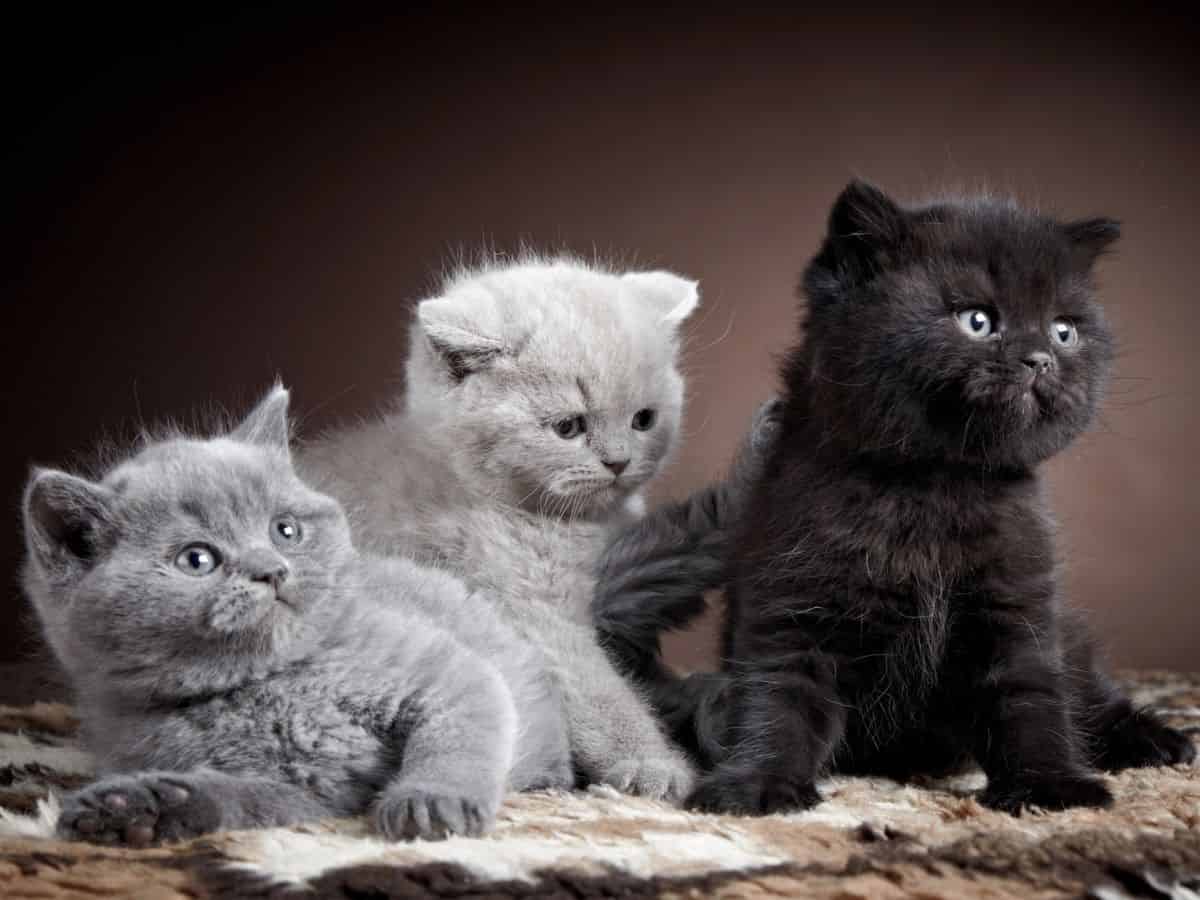
Chocolate
Chocolate fur is also known as brown, seal, sable, chestnut, or tawny fur color. Chocolate cats have reduced eumelanin which makes them appear brown in color.
Brown cats have the “b/b, D/D” genotype.
Brown cats are relatively rare with the Havana Brown being the most recognizable of the purebred cats with this coat color.
Lavender cats
Lavender, or lilac, cat coat colors are a dilution of the brown gene.
Lilac cats, one of the recognized fur coat colors of British shorthairs, is a mix of gray, pink, and blue colors.
Cinnamon
Cinnamon cats have the recessive “bl/bl” genotype.
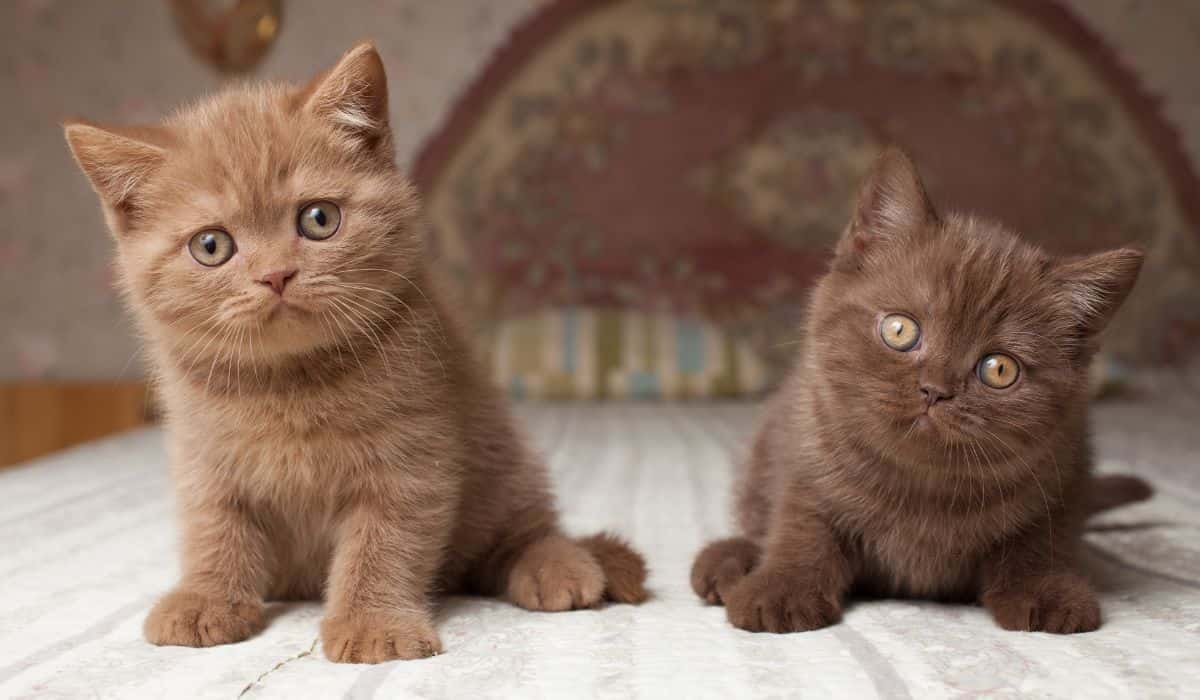
Fawn
Fawn is the diluted version of cinnamon. Fawn is a light beige color and cats with this color have a “b/b d/d” genotype.
Red
Red fur color is also known as orange, marmalade, or ginger fur. Pheomelanin is the pigment responsible for producing red shades in cat fur coats.
The gene (Oo) that encodes pheomelanin is found on the X chromosome. This means that O is dominant and o is recessive for non-red (or orange) fur pigmentation.
Males carry only one of the alleles. If the allele on the X chromosome on a male is O, the cat will be an orange tabby. If the allele is o then the cat will be non-red.
For females, two dominant alleles (OO) are needed for the cat to be an orange tabby. If the alleles are Oo then the cat will have a tortoiseshell fur pattern. This is why about 90% of orange tabbies are male and why male tortoiseshell cats are very rare.
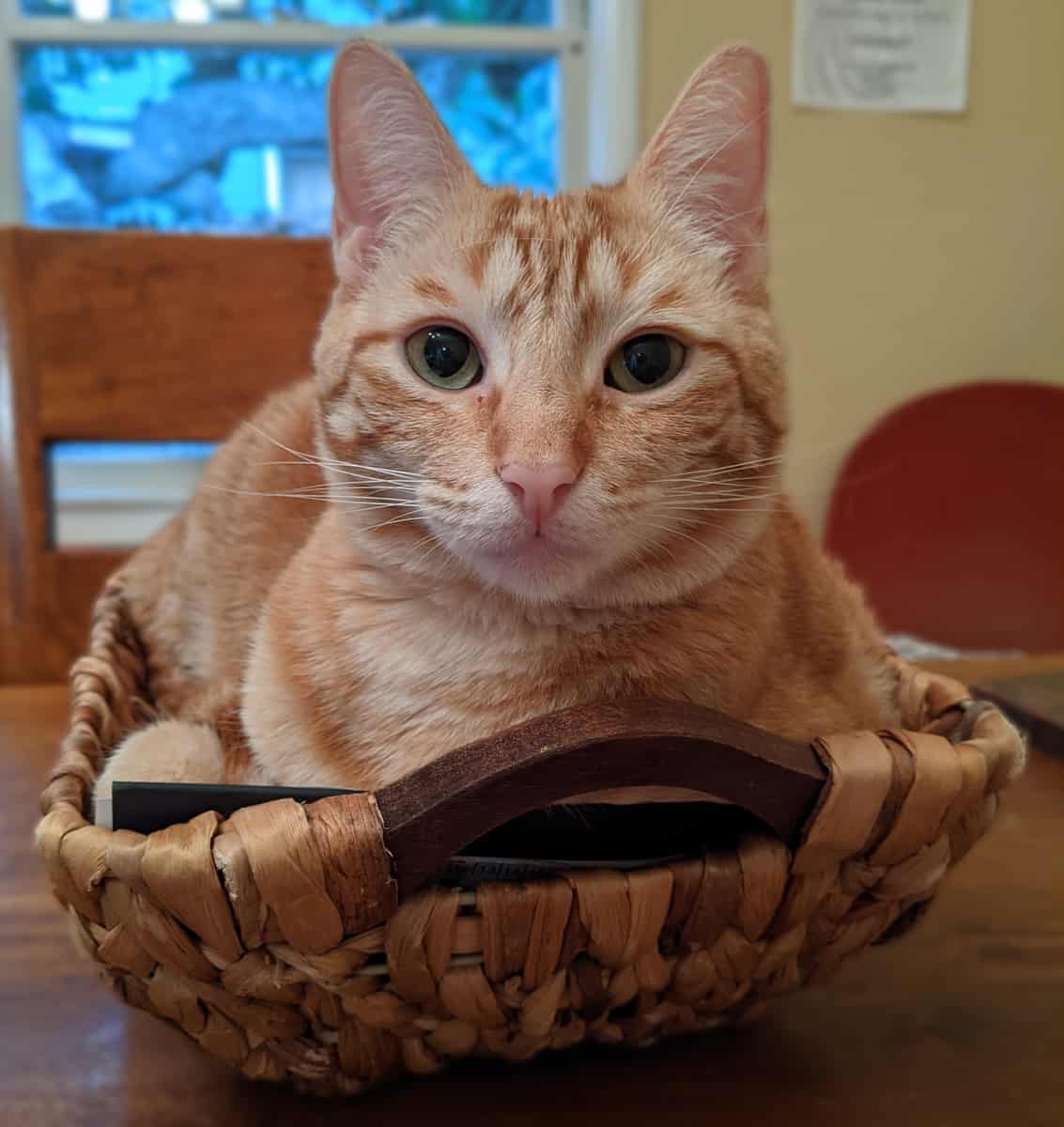
There are no solid color red cats – only red tabby cats. The gene for red color, O, is epistatic to the non-agouti gene which means it cancels out the genetic ability to produce a solid coat color. The agouti gene is then expressed which is the gene for tabby coat pattern in cats.
Cream
Cream is a dilution of red fur. Cream is also referred to as buff.
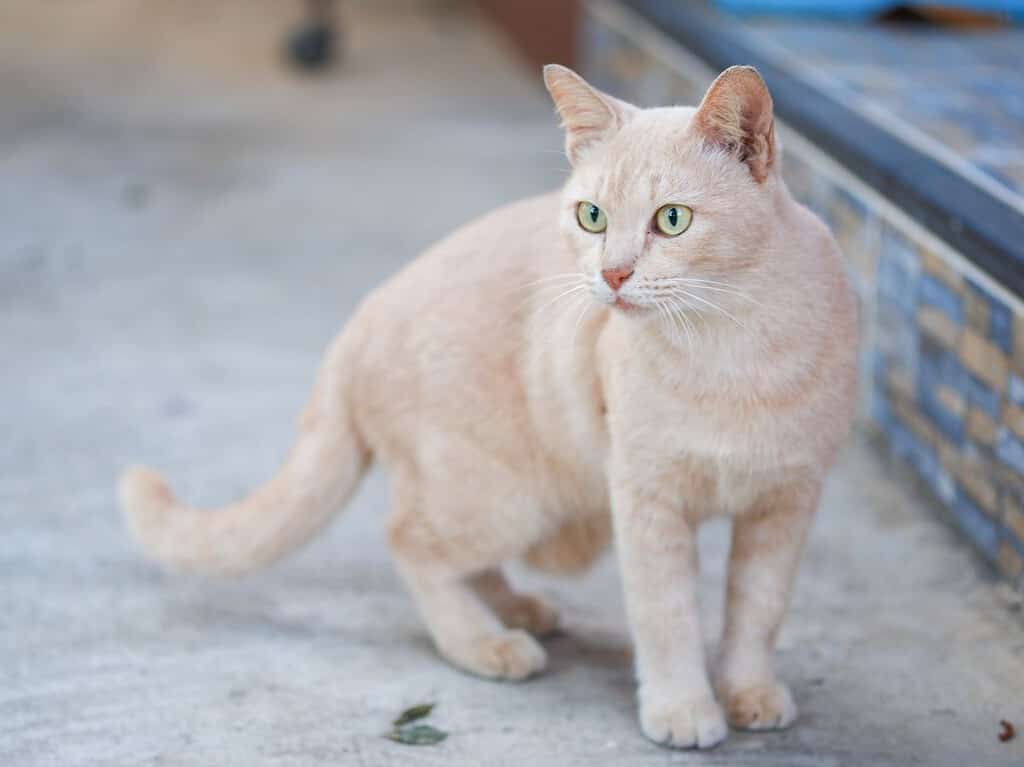
White
White cats have a fur coat that lacks pigmentation. There are three genetic conditions that can produce an all-white cat: Dominant white gene, complete white-spotting gene, and albinism.
Cats with all-white fur carry the dominant white gene (DW) that masks all other color genes. Cats with this gene will have a white coat regardless of the genes for other colors that they may carry. This gene can also frequently cause deafness, especially in cats with blue eyes.
Completely all-white cats can also be a solid color as the result of complete white-spotting “Ws” gene.
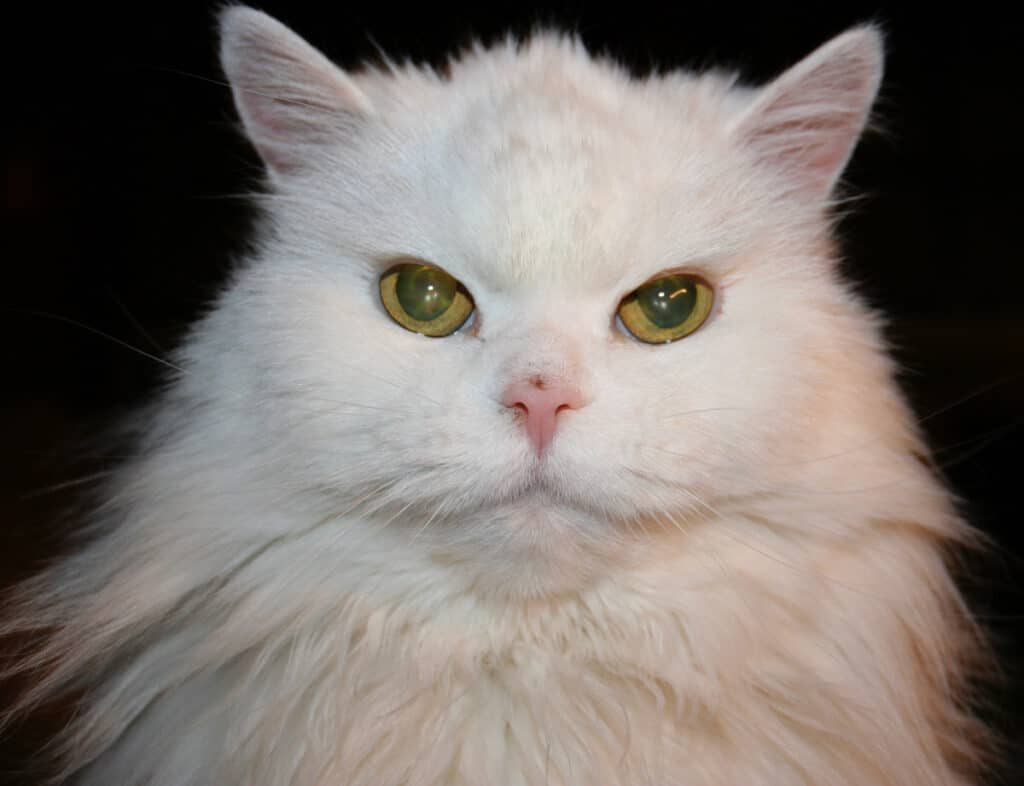
The DW gene is not the same as the gene for albinism.
The genotype for albinism is “A/A”. Albino cats have no pigmentation in their skin, fur, and eyes. So while these cats will also have white fur, the lack of pigment in the eyes can give them a pinkish appearance.
Cats with the DW gene have a variety of eye colors ranging from yellow to green to blue.
Breeds like the Turkish Van, Maine Coon, and Persian can have white coats.
Some white cats, especially the Turkish Van are known for the high prevalence of heterochromia, where each eye has a different color.
